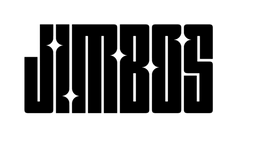How to Layer Ceramic Spray for Maximum Durability on Boats
If you want your ceramic coating to last through a full boating season — salt, sun, and all — layering is the secret. In this guide, you’ll learn how to layer ceramic spray correctly to achieve a slicker surface, longer protection, and a deeper gloss that holds up against harsh marine conditions.
Estimated Reading Time: ~9 minutes
Why Layering Ceramic Spray Matters
Each layer of ceramic spray adds more protection and depth to your finish. Think of it like stacking invisible shields — the more evenly applied layers you build, the more durable and water-repellent your surface becomes. Especially for Florida or coastal boaters, this can double or even triple the lifespan of your protection.
- → Increased durability: More layers equal more resistance to salt, UV, and abrasion.
- → Improved slickness: Each layer enhances smoothness and gloss.
- → Easier maintenance: Dirt, algae, and scum slide off more easily.
How to Layer Ceramic Spray the Right Way
The key is proper timing and surface prep. Rushing through layers or applying too thickly can trap residue and reduce performance.
Step-by-Step Layering Process:
-
Start with a clean surface.
Wash your boat with The Super Soaper and dry with a Massive Drying Towel. -
Apply your first coat.
Spray Tough As Shell Ceramic Spray onto a microfiber towel and wipe evenly across small sections. Buff until streak-free. -
Allow curing time.
Let the first layer cure for at least 1 hour (ideally 4–6) before adding another coat. Avoid moisture or water contact during this time. -
Apply the second layer.
Use less product this time — a fine mist per section. This enhances slickness and deepens gloss. -
Optional third layer.
For high-salt environments or long-term storage, apply a third coat after 12–24 hours for maximum durability.
Pro Tip: Cross-Hatch Your Application
For perfect coverage, apply the first coat left to right, and the second coat up and down. This crisscross pattern ensures every area gets full ceramic contact, preventing streaks or missed spots.
Ceramic Spray Layering Comparison
| Layer Count | Durability | Gloss Level | Recommended Use |
|---|---|---|---|
| 1 Layer | 4–6 months | Good | Freshwater boats |
| 2 Layers | 6–9 months | High gloss | Saltwater boats / Jet Skis |
| 3 Layers | 9–12 months | Mirror-like finish | High exposure environments (Florida, Gulf Coast) |
Layer Up for Maximum Protection
Each coat of Tough As Shell Ceramic Spray strengthens your barrier against salt, sun, and oxidation. One product — endless shine.
Shop Tough As Shell Buy on AmazonMaintaining Your Layered Ceramic Protection
- → Wash weekly using The Super Soaper — safe for ceramic coatings.
- → Dry immediately with a Massive Drying Towel to prevent water spots.
- → Apply a maintenance layer of Tough As Shell every 2–3 months.
- → Avoid abrasive polishes or harsh detergents — they can strip layers prematurely.
Get That Deep, Long-Lasting Shine
Stack multiple layers of Tough As Shell Ceramic Spray for unbeatable gloss and protection — designed for salt, UV, and extreme marine conditions.
Shop Tough As Shell Shop The Super Soaper Buy on AmazonRelated Reading
- How to Prep Your Boat for Ceramic Coating
- How to Maintain a Ceramic-Coated Boat Year-Round
- The Truth About Ceramic Coatings on Gel Coat vs. Paint
- Why Ceramic Spray Beats Wax for Jet Skis and PWCs
- The Complete Guide to Boat Hull Oxidation Removal
FAQs
How long should I wait between ceramic spray layers?
Wait at least 1 hour (ideally 4–6) between coats to allow proper curing and bonding before applying the next layer.
Can I add more layers after a few weeks?
Yes. As long as the surface is clean, you can add a fresh layer at any time to refresh gloss and boost protection.
How many layers is too many?
Three layers is the practical limit. After that, you’ll see diminishing returns with minimal added benefit.
Does layering make the surface slippery?
No — it enhances slickness for easier cleaning, but it won’t make decks or non-skid areas unsafe when applied correctly.
What’s the benefit of layering on saltwater boats?
Multiple layers extend protection from corrosion and oxidation, helping your coating last through long saltwater seasons.



